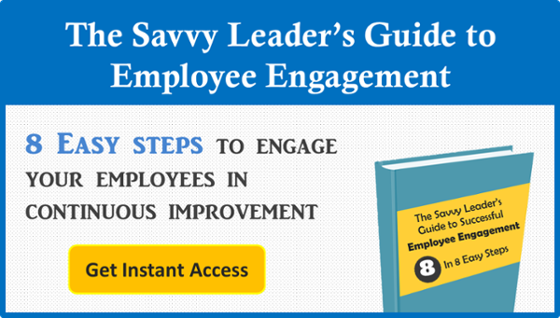 We are fortunate to have the opportunity to work with many companies who are looking for ways to embrace, enhance, and maintain a continuous improvement model for their businesses. Many come to us with the same set of basic questions, so we thought it might be helpful to share the answers to those we are asked most frequently.
We are fortunate to have the opportunity to work with many companies who are looking for ways to embrace, enhance, and maintain a continuous improvement model for their businesses. Many come to us with the same set of basic questions, so we thought it might be helpful to share the answers to those we are asked most frequently.
What is the philosophy behind continuous improvement?
The continuous improvement model is based on a Japanese idea called Kaizen. It is the concept of always looking for ways to improve business operations. Fundamental to the approach is the belief that every part of every organization can be improved, and that the people who are most closely involved with the work are best positioned to identify what changes should be made.
Is the continuous improvement model only for companies that use a formal model like Six Sigma or Lean?
Although it is certainly an important part of business operations methodologies such as Six Sigma, Lean, TQM and others, the continuous improvement model can definitely be embraced on its own. To be effective, however, it must be consistently practiced organization-wide and have strong support from the executive team and leaders at all levels.
Who is responsible for continuous improvement?
This is an interesting question because, ultimately, every single person in the organization has a role to play in improvement. Front line employees will identify and implement opportunities for improvement, managers and supervisors will support and reward employee improvement efforts, and executive teams will finance the improvements and create a culture that values employee ideas and engagement. Some organizations also find it helpful to have special teams or individuals assigned to manage and report on improvement efforts, but they should be seen as improvement facilitators, not as the sole source of improvement effort and ideas.
How can my organization support improvement initiatives?
One of the most important things an organization can do to support continuous improvement is to deploy a technology platform that supports the practice. The solution should be designed to bring people from all levels and parts of the organization together to identify and solve problems big and small. It should create a degree of transparency around improvement projects and serve as the organization’s tribal knowledge for problem solving. By adding workflows and alerts, the solution can also facilitate positive change and give momentum to improvement efforts.
What are the advantages of the continuous improvement model?
Companies that successfully implement and maintain continuous improvement are rewarded with reduced costs, increased efficiency and quality, accelerated product innovation, better customer satisfaction scores, less employee turnover, and improved safety records. In fact, there are very few measures of operational performance that can’t be positively impacted with a continuous improvement model.
Hopefully these FAQs have been helpful. If you have additional questions or would like to discuss your particular challenges and goals, feel free to reach out. It’s our favorite subject.




Add a Comment